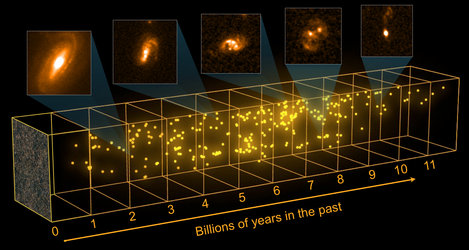Accept all cookies Accept only essential cookies See our Cookie Notice

About ESA
The European Space Agency (ESA) is Europe’s gateway to space. Its mission is to shape the development of Europe’s space capability and ensure that investment in space continues to deliver benefits to the citizens of Europe and the world.
Highlights
ESA - United space in Europe
This is ESA ESA facts Member States & Cooperating States Funding Director General Top management For Member State Delegations European vision European Space Policy ESA & EU Space Councils Responsibility & Sustainability Annual Report Calendar of meetings Corporate newsEstablishments & sites
ESA Headquarters ESA ESTEC ESA ESOC ESA ESRIN ESA EAC ESA ESAC Europe's Spaceport ESA ESEC ESA ECSAT Brussels Office Washington OfficeWorking with ESA
Business with ESA ESA Commercialisation Gateway Law at ESA Careers Cyber resilience at ESA IT at ESA Newsroom Partnerships Merchandising Licence Education Open Space Innovation Platform Integrity and Reporting Administrative Tribunal Health and SafetyMore about ESA
History ESA Historical Archives Exhibitions Publications Art & Culture ESA Merchandise Kids Diversity ESA Brand Centre ESA ChampionsSpace in Member States
Find out more about space activities in our 23 Member States, and understand how ESA works together with their national agencies, institutions and organisations.
Science & Exploration
Exploring our Solar System and unlocking the secrets of the Universe
Go to topicAstronauts
Missions
Juice Euclid Webb Solar Orbiter BepiColombo Gaia ExoMars Cheops Exoplanet missions More missionsActivities
International Space Station Orion service module Gateway Concordia Caves & Pangaea BenefitsLatest
Space Safety
Protecting life and infrastructure on Earth and in orbit
Go to topicAsteroids
Asteroids and Planetary Defence Asteroid danger explained Flyeye telescope: asteroid detection Hera mission: asteroid deflection Near-Earth Object Coordination CentreSpace junk
About space debris Space debris by the numbers Space Environment Report In space refuelling, refurbishing and removingSafety from space
Clean Space ecodesign Zero Debris Technologies Space for Earth Supporting Sustainable DevelopmentApplications
Using space to benefit citizens and meet future challenges on Earth
Go to topicObserving the Earth
Observing the Earth Future EO Copernicus Meteorology Space for our climate Satellite missionsCommercialisation
ESA Commercialisation Gateway Open Space Innovation Platform Business Incubation ESA Space SolutionsLatest
Enabling & Support
Making space accessible and developing the technologies for the future
Go to topicBuilding missions
Space Engineering and Technology Test centre Laboratories Concurrent Design Facility Preparing for the future Shaping the Future Discovery and Preparation Advanced Concepts TeamSpace transportation
Space Transportation Ariane Vega Space Rider Future space transportation Boost! Europe's Spaceport Launches from Europe's Spaceport from 2012Latest

ISO observes starburst galaxies
Thank you for liking
You have already liked this page, you can only like it once!
Intense infrared emissions detected by ESA's Infrared Space Observatory (ISO) tell of feverish episodes of star-making in progress in far-flung galaxies. ISO's observations at an infrared wavelength of 7 micron are depicted in red in this image. They are superimposed on blue spots that represent detections of galaxies at a near-IR wavelength of 2 micron, using the ground-based 2.2-m telescope in Hawaii. ISO picks out the galaxies most energetic in the infrared. Remarkable for astronomers is the high proportion of galaxies in which starbursts occur. In this small patch of sky, only one-twentieth of a degree wide, at least 27 galaxies clearly show the excess infrared emission at 7 micron attributable to starbursts. Among nearby galaxies, starbursts are comparatively rare, and they are often associated with collisions between galaxies. The objects are at distances of billions of light-years, and are estimated to be typically about half the age of our Milky Way Galaxy and its near neighbours. The depicted galaxies existed at a time when the Universe is smaller and more crowded, and collisions between galaxies were more likely. This observation by ISO strengthens a conviction among astronomers that many galaxies have evolved significantly during their histories, perhaps as a result of violent encounters. The galaxies are seen through the Lockman Hole, a window in the dust of our own Milky Way Galaxy, in the constellation Ursa Major. Other telescopes use the same window to look for the galaxies of the young Universe. ISO's camera ISOCAM was trained on the spot for more than 13 h to obtain this image of the faintest galaxies yet seen by ISO. [Image Date: 1997/07] [97.08.001-001]
-
CREDIT
ESA/ISO and ISOCAM (7 micron), University of Hawaii 2.2-m telescope (2 micron) and Y. Taniguchi et al. -
LICENCE
ESA Standard Licence

ISO search for early galaxies

ISO view of the galactic plane

ISO image of spiral galaxy M83

Seeking out starburst galaxies















 Germany
Germany
 Austria
Austria
 Belgium
Belgium
 Denmark
Denmark
 Spain
Spain
 Estonia
Estonia
 Finland
Finland
 France
France
 Greece
Greece
 Hungary
Hungary
 Ireland
Ireland
 Italy
Italy
 Luxembourg
Luxembourg
 Norway
Norway
 The Netherlands
The Netherlands
 Poland
Poland
 Portugal
Portugal
 Czechia
Czechia
 Romania
Romania
 United Kingdom
United Kingdom
 Slovenia
Slovenia
 Sweden
Sweden
 Switzerland
Switzerland
























